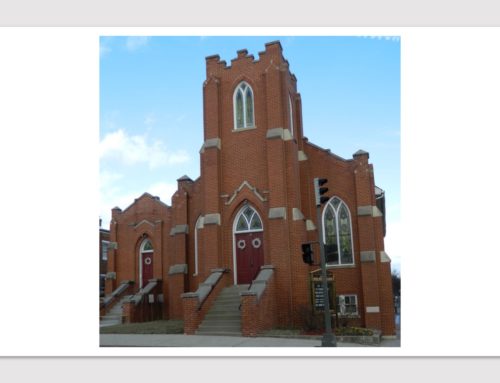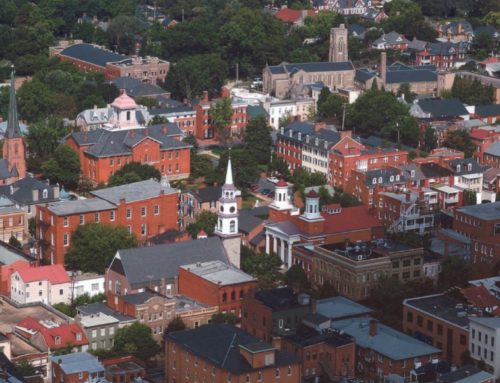Excerpt from the Frederick News-Post:
An upcoming city vote could add a layer of requirements intended to ensure preservation of four historic properties in Frederick.
The Board of Aldermen will vote on Jan. 21 on a proposal to place historic preservation overlays at the Union Mills building, the Ox Fibre Brush Co. building, the Frederick City Packing Co. building and the Schley House. The overlays were recommended by the city Planning and Historic Preservation commissions.
An overlay is an extra level of regulation on top of zoning requirements already in place. If approved, the overlay would grant the Historic Preservation Commission authority to review and approve major exterior changes to the properties.
Regardless of what the aldermen decide, the owner of Union Mills has begun to prepare for how the pending designation could affect development plans.
Architects with Douglas Development Corp. submitted an application to the HPC on Thursday for phase two of renovations on the 332-340 E. Patrick St. space, according to Jim Mackintosh. Mackintosh, of Mackintosh Inc. Realtors, is handling the leasing of the property.
Renovations under the first phase of the project — transforming 34,800 square feet of the industrial building into office space — are nearly complete and will not be affected by the designation. The second phase, which involves rehabilitation of 15,000 square feet for retail space, will require HPC approval if the designation is approved.
The Thursday submission allows the review process on those plans to begin at the commission’s Jan. 28 meeting, according to Lisa Mroszczyk Murphy, one of the city’s historic preservation planners.
Mackintosh explained the application as part of efforts to keep the renovation work on schedule.
“We’ve got to move this project forward,” he said.
Several potential retail tenants have already indicated interest in leasing part of the space along Carroll Creek, which is scheduled to be completed by early 2017, Mackintosh said.
The software company Regent Education has already signed a lease for 26,000 square feet of office space, and plans to relocate its 85 employees there this spring. The relocation also requires the second phase of the project to progress relatively quickly, Mackintosh said.
Approval of the designation would subject the property to a set of historic guidelines addressing everything from windows and doors to demolition and signage. Douglas’ plans call for demolition of part of the roof structure, and adding several doorways to separate the retail spaces.
Mackintosh described the design as “one of the best” redevelopments of a historic city building. He pointed to Douglas’ experience developing within historic regulations in Washington as proof of the company’s abilities and commitment to preservation.
However, he also said the design would reflect “what they think is best for attracting retailers to the creek.”
If the aldermen reject the historic designation, the site plans would be subject to the design guidelines for the Carroll Creek Overlay district. In either case, the Planning Commission must approve the phase two site plans, according to Gabrielle Collard, the city’s division manager of current planning.
According to Collard, the approval timeline will be largely similar under either scenario and set of guidelines.
“We are definitely prepared to facilitate either process to the best of our abilities,” she wrote in an email response.
The four recommended overlay sites, all in Neighborhood Advisory Council 12, are the first of the 26 identified as potentially eligible for historic designation under the city’s 2010 Comprehensive Plan. A designation committee formed to review these properties will continue to submit applications for the remaining properties on that list, apart from a handful that were demolished or are no longer eligible because of substantial alterations in the last five years.
The recommendations mark one of the first times the city has considered an overlay on properties outside the Frederick Town Historic District without being prompted by a demolition application from the property owner.
The Packing Co. building is owned by the city, while the other three sites named in the application are owned privately. Goodwill Industries of Monocacy Valley owns the Ox Fibre Brush Co. building and a business entity formed by members of the Young family owns the Schley House.



